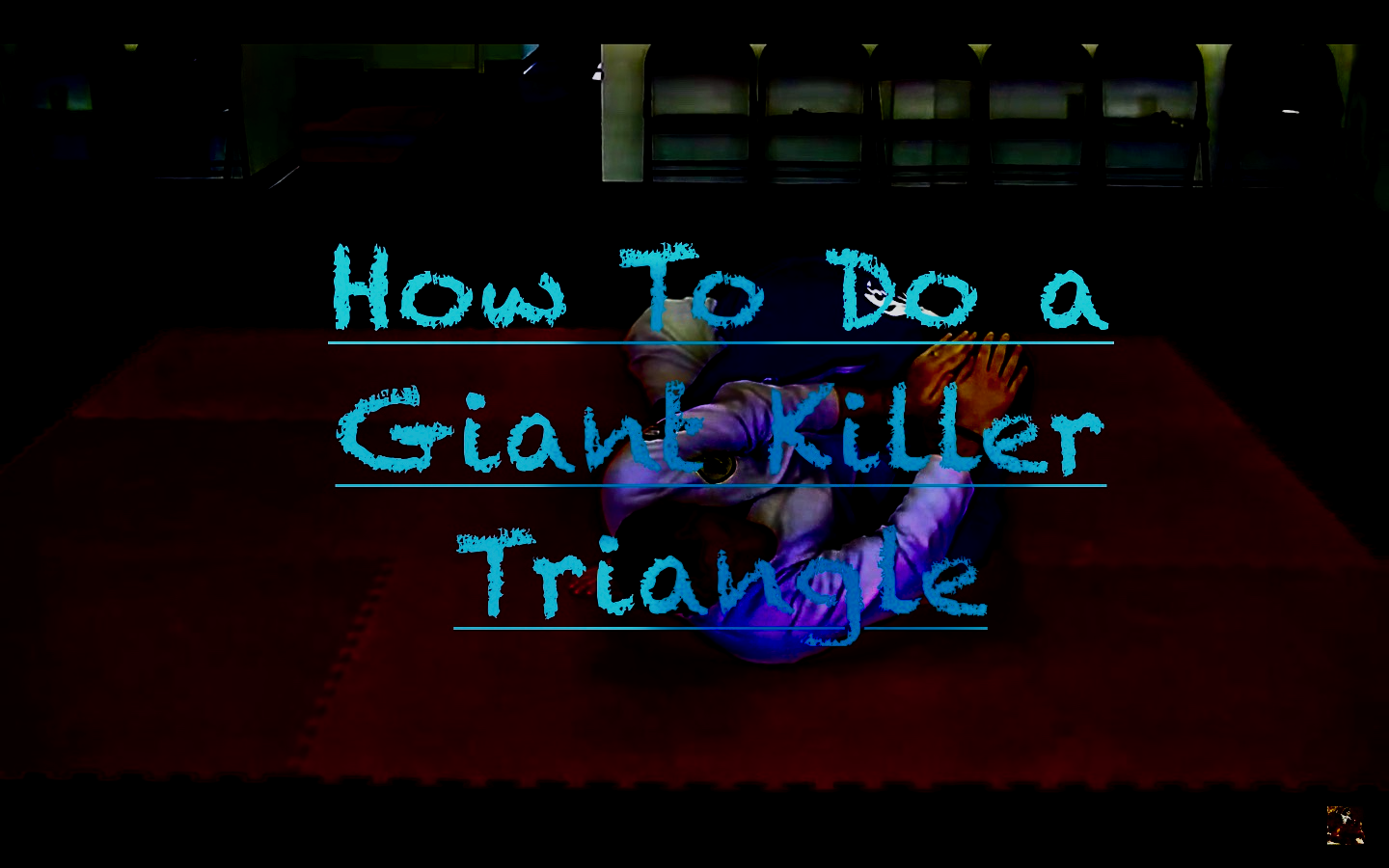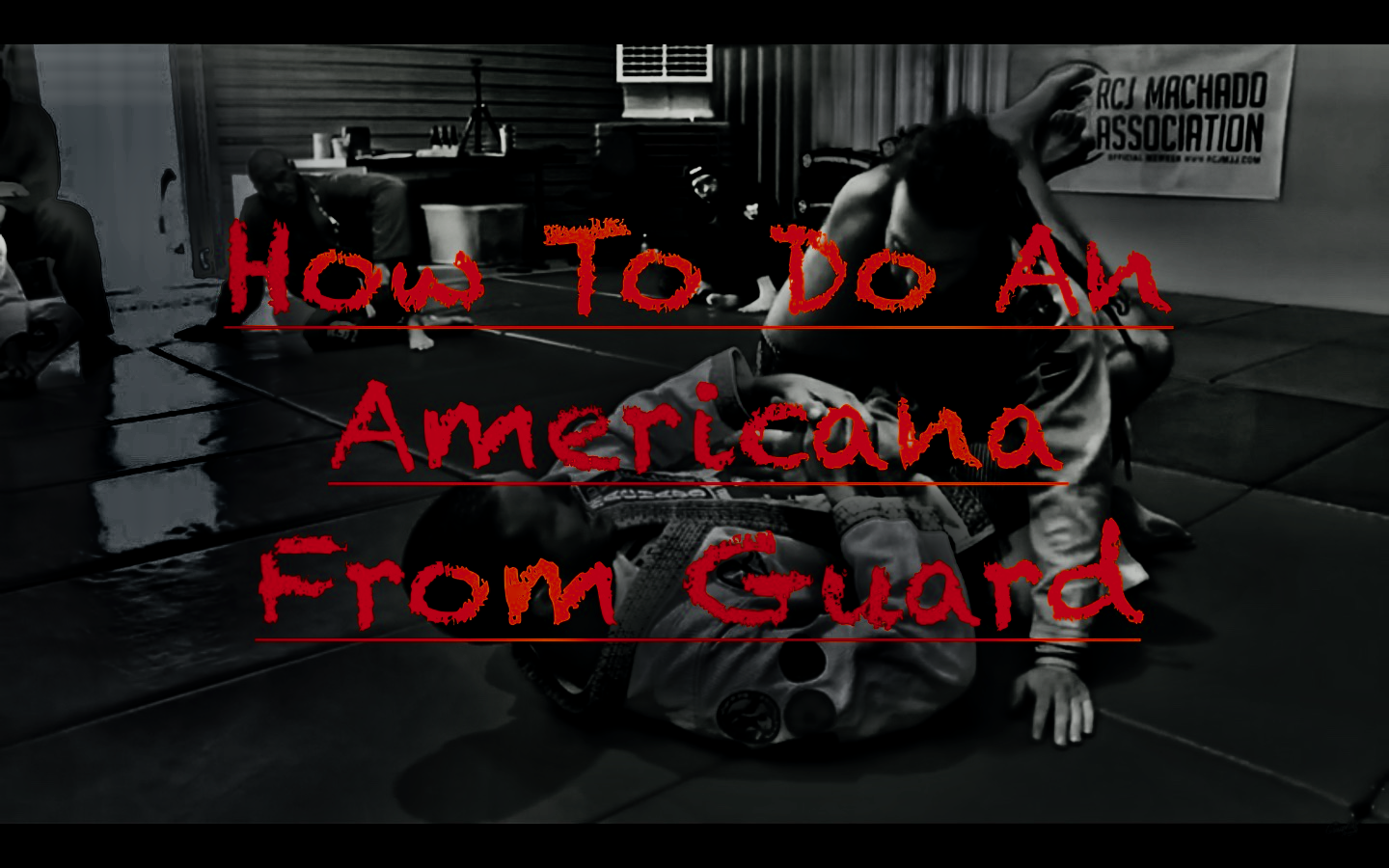
The triangle choke submission in BJJ is one of the defining submissions of the sport. Using the triangle choke a smaller or weaker person can use the mechanics of their legs to choke the neck of a larger, stronger opponent. The triangle perfectly illustrates the Brazilian Jiu-Jitsu core belief that technique will beat strength. That belief is at the core of the name of this submission, the giant killer triangle choke.
The giant killer triangle choke submission is a basic technique that is a part of the How To Get a BJJ Blue Belt guide for what the Gracie family expects every blue belt to know.
The giant killer triangle submission is an option if your opponent is too large or too strong for you to secure the open guard 1.5 position and you are left without the push-pull necessary to fully control their upper body.
Start: Closed guard with opponent hugging close to you
Step 1: Use legs to push opponent’s hips down and away from your head
Step 2: Use two hands to push opponent’s head to one side (this will be attacking side)
Step 3: Post non-attacking side foot on the ground and shrimp to that side
Step 4: Put both feet onto opponent’s hips and grab opponent’s non-attacking side arm with both hand
Step 5: Stretch opponent out with push-pull of hips and arm to create enough space for triangle setup
Step 6: Swim attacking side leg up and over opponent’s neck and lock ankles
Step 7: Push opponent’s trapped arm across their body
Step 8: Post non-attacking foot on opponent’s hip and rotate your body in line with their trapped arm
Step 9: Figure-four non-attacking side knee over attacking shin
Step 10: Pull down on opponent’s head and squeeze triangle choke
Finish: Submission via giant killer triangle choke submission



